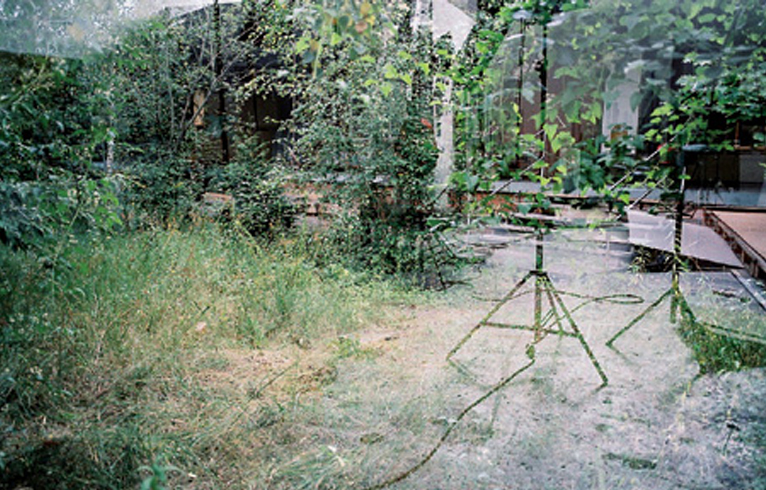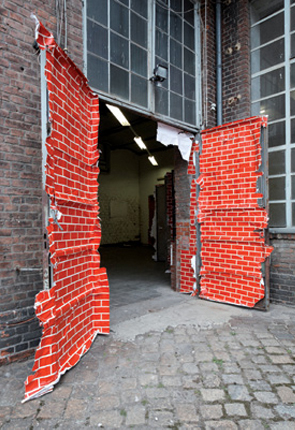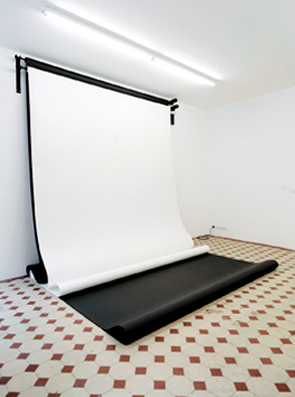BASED IN BERLIN
| September 19, 2011 | Post In LEAP 10

Just what is it that makes today’s Berlin so different, so appealing? Klaus Wowereit, member of the German Social Democrat party and governing mayor of Berlin also doesn’t know exactly. But there is one thing he knows: “That many artists from Germany and around the world live in Berlin, developing their cutting-edge work here.” So, last autumn the mayor wrote an open letter to all young artists living and working in the city, inviting them to submit their portfolios for review and —if selected by a group of five young curators— to show their work in a Leistungsschau, a term perhaps best translated as “performance showcase.” The Leistungsschau was scheduled for summer 2011 and quickly assembled an impressive advisory board of high-profile curators: Centre Pompidou’s Christine Macel, MoMA P.S. 1’s Klaus Biesenbach, and Serpentine Gallery co-director Hans Ulrich Obrist.
Opened in the “gap week” between Venice and Basel, the show included work by more than 80 artists from 26 countries currently working in Berlin. It is important to remember the political pretext for this show in order to understand why “Based in Berlin,”— headquartered in a rundown studio building at Monbijoupark near the Museum Island and further spread across four satellite locations— provoked less public debate than the process that brought it into being. Since Wowereit’s announcement in October 2010, the project was burdened with local politics, high expectations, and ambitions alike. The fact that a mayor commissioned an exhibition to highlight the “creative city” in the year of the local elections provoked strong criticism in parts of the artist community who felt their activities instrumentalized for very different, even opposite purposes. The disagreement resulted in an open letter, published in January 2011 by a group of art activists: entitled “To Have and to Need” it was highly critical of Wowereit’s cultural and political agenda. With 2500 signing artists, curators, architects and others, it was supported by a substantial part of the city’s art scene.

It is precisely the shortcoming of the show— organized by the five young curators Angelique Campens, Fredi Fischli, Magdalena Magiera, Jakob Schillinger, and Scott Cameron Weaver— that it failed to translate this critical momentum into an inspiring exhibition. Instead, it followed the well-beaten track, reiterating the twin myths of the emerging artist and the ever-emerging city of Berlin, while ignoring the role such rhetoric plays in the commodification of culture and the city. Berlin’s self-image as the “capital of the unfinished” that has prevailed for almost two decades is rapidly losing its attraction; a new, challenging urban narrative is not in sight. Due to the lack of political vision and outright financial mismanagement, local politicians have missed numerous opportunities since 1990 to use the potential of the reunited city to its advantage.
It is certainly not the task of an art exhibition to make up for any wrongdoings in local politics and their ideology. But the question remains: how can curatorial and artistic practice defend their autonomy— especially, if a mayor, seeking re-election, is suddenly spending EUR 1.6 million on an art exhibition, disregarding the various underfinanced institutions for contemporary art and the fading opportunities for artists to find affordable studios and project spaces?
Still, some of the artworks in the exhibition reflect the twisted history of “Based in Berlin,” though in a subtle way. The Japanese-American artist-duo Jay Chung and Q Takeki Maeda installed a gallery of official portraits of politicians in the corridor of the studio building of Monbijoupark. The photographs show several former political opponents of the current mayor. Displaying, for instance, the portrait of Frank Steffel, a Christian Democrat, who lost the mayoral election in 2001, as well as Friedbert Pflüger, who was defeated by Wowereit in 2006, it is a reflection of his political career and history. Truly, one thinks, things could have turned out worse for the city. Another reference to local politics is placed at the KW Institute for Contemporary Art on Auguststrasse, one of the show’s four satellite venues. A majestic looking Wowereit, photographed by Clegg & Guttmann, greets the visitor on an almost empty floor, which hosts the projects of “After the Butcher,” an artist-run exhibition space in Berlin-Lichtenberg.

In turn, the video work by the Vietnamese artist Akim, shown at the Hamburger Bahnhof, seems to investigate the terminology of “performance” as evoked by the term “Leistungsschau,” implicitly revealing the idea of an art sphere determined by efficiency, marketability, and competition. It is a best-of collage of found footage from the graffiti scene, epitomizing the lust for competition and the speedy aesthetics applied to public transport trains. How many seconds do I need to change the color of one square meter of a subway train? From this angle, performance in art is taken literally, measurable in seconds and square meters.
Still, one looks in vain for more explicit artworks relating to the city or the politics that rules it. How exactly does Berlin shape and inscribe itself in the work of these artists? Is the place of production still as relevant as the title of the show suggests? Or is “Berlin” merely a biographical asset which secures the artist a bonus in the global art market? According to the curatorial team, “‘Based in Berlin’ is decidedly not a thematic exhibition.” The negation of a thematic framework gives the curators the freedom to work “inductively within a formally defined frame of research.” But this negation also makes it somehow impossible to judge on its own success or failure qua exhibition.
It may be that “Based in Berlin” is best characterized as an in-between: neither wrong nor right, neither boring nor not thoughtprovoking. It may be compared to the three Chinese fake SUVs— a project by Oliver Laric— displayed on a huge, stage-like construction. Their strong physical resemblance to BMW models already in production led to their import being restricted by the European Union. However, the message of the dangling cars in the framework of this particular exhibition is not quite clear; they pose questions that they do not actually attempt to answer, standing in most interesting relation, perhaps, to the fleet of “real” German VIP cars that took around the assembled dignitaries on opening day. One would have hoped that the exhibition was more connected to its city, its realities and contradictions, instead of merely hovering over it. Kito Nedo

